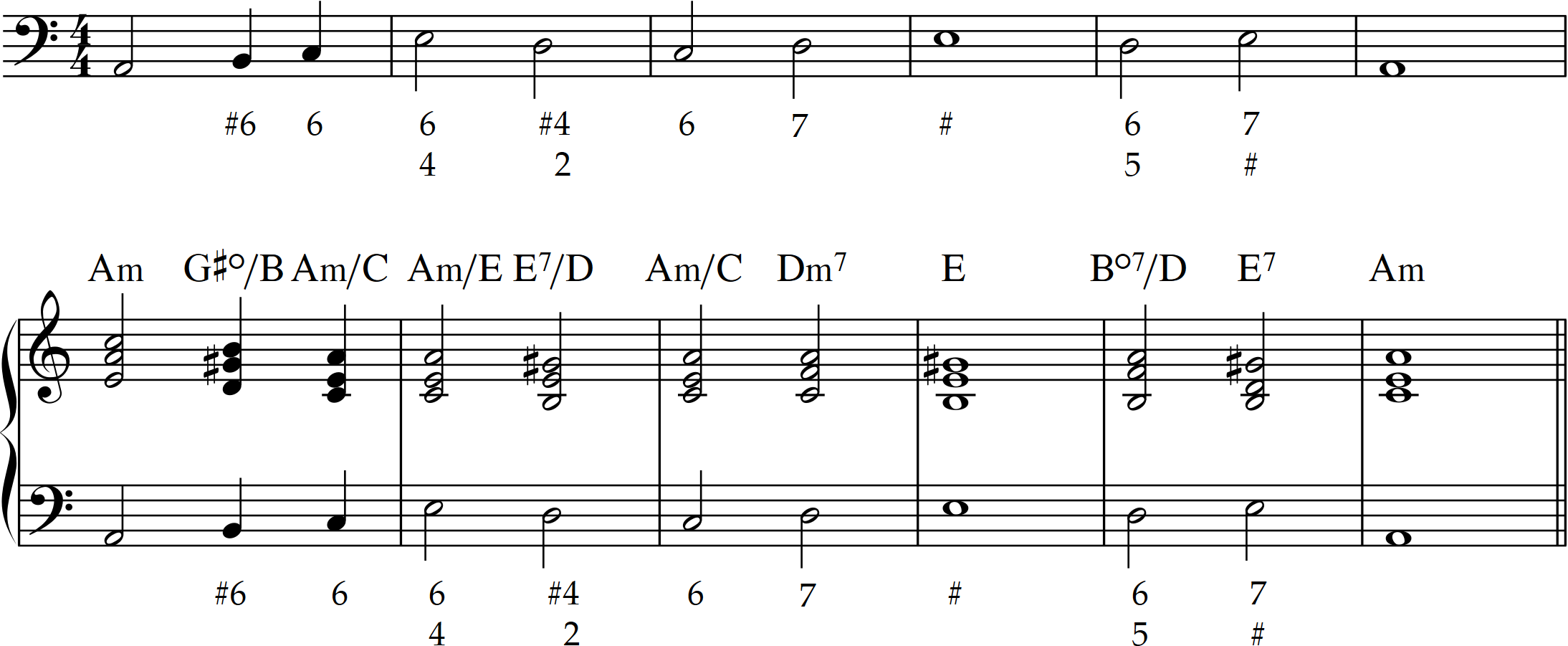Figured Bass and Realization
Shorthand for Inversions
When indicating the bass note using Lead Sheet symbols, it is placed under a slash. The symbol for a G major triad in first inversion is G/B¨. When using Roman Numerals to indicate chord functions, a system called Figured Bass is used. This convention began in the 17th century in keyboard parts known as the “continuo.” A bass note was written in the music, with numbers that indicate the intervals to be played above that bass note. In modern-day usage, the bass position is defined by a commonly used system of shorthand.

A few other symbols are placed before or after the number to indicate chromatic alterations in the chord above the bass note. Generally, an accidental placed beside a number indicates the desired alteration.

These indications to alter the pitch can be applied to any number.
Realizing Harmony in Keyboard Format
Given a series of Roman Numerals with figured bass symbols in the bass clef, we can construct a series of chords in the treble clef. Using a grand staff, playing the upper three notes with the right hand and the bass note with the left hand is called “Keyboard Format.” The chords in the right hand are usually arranged so that common tones between chords are kept by the same finger. Other tones move stepwise, or to the nearest note of the next chord for smooth “Voice Leading.” Following these principles for 4-parts, Soprano, Alto, Tenor, and Bass (SATB), is called “Part-Writing.” We will address this in the next lesson.
Harmonic Analysis
What do we mean by analysis? Simply put, it is identifying the relationships between musical elements in a piece of music. Harmony is just one of the elements, along with melody, rhythm, and structural form. Using Roman Numerals and figured bass, we are able to identify the relationships of chords to a key, and to one another. It is a portable system of defining harmonies that can be realized in any key. It is a way to learn music, and to communicate it to others.
The Roman Numeral and any figured bass, if the chord is inverted, is placed below the bass note of the chord, not above the staff. If you add Lead Sheet symbols, they are place above each chord. It is redundant to use both, but you may wish to identify the chord first by letter name and quality with a Lead Sheet symbol, then add the Roman Numeral that represents its function in the key. Place the letter name of the key before the Roman Numerals with a colon after it.

